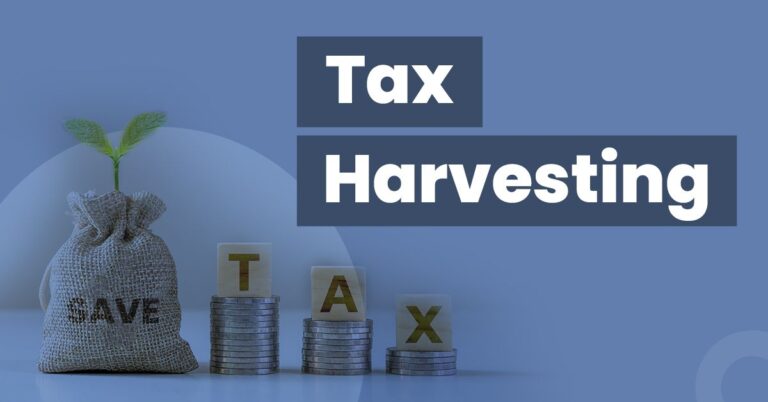Building a Winning Mutual Fund Portfolio: A Step-by-Step Guide
How to Build a Mutual Fund Portfolio
Mutual fund investment is one of the best ways to diversify your investments, manage risk, liquidity and work towards your financial goals. A well-structured mutual fund portfolio can provide steady growth, stability, and income generation.

In this article will walk you through the steps to build a strong mutual fund portfolio tailored to your needs.
Step 1: Define Your Investment Goals
Before selecting mutual funds, you must establish clear investment objectives.
Ask yourself:
- Are you investing for retirement, wealth accumulation, education, or income?
- What is your investment time horizon—short-term, medium-term, or long-term?
- What is your risk tolerance—low, moderate, or high?
Your answers will determine the type of mutual funds best suited for you.
Step 2: Understand Different Types of Mutual Funds
There are various types of mutual funds, each catering to different financial goals and risk appetites:
- Equity Funds: Invest in stocks; offer high growth potential but come with higher risk.
- Debt Funds: Invest in fixed-income securities; suitable for stability and regular income.
- Balanced/Hybrid Funds: A mix of equity and debt; ideal for moderate risk-tolerant investors.
- Index Funds: Passively track a market index and offer low-cost diversification.
- Sector/Thematic Funds: Invest in specific sectors (e.g: defense, technology, healthcare); high risk but high reward potential.
- International Funds: Provide exposure to global markets and help diversify geographical risks.
- Tax-Saving Funds (ELSS): Offer tax benefits under specific investment schemes, suitable for long-term investors.
Step 3: Diversify Your Portfolio
Diversify your portfolio investments across different asset classes to reduce risk. Consider:
- Allocating assets based on your goals and risk tolerance (e.g., 70% equities, 20% debt, 10% cash).
- Selecting funds from different fund houses to avoid overexposure to a single fund manager.
- Investing in domestic and international funds for broader diversification.
- Including large-cap, mid-cap, and small-cap funds to balance growth and stability.
Step 4: Evaluate Fund Performance and Costs
When you are selecting mutual funds, analyze:
- Historical Performance: Compare past returns against benchmarks and peer funds.
- Expense Ratio: Lower costs help maximize returns.
- Fund Manager Expertise: A seasoned fund manager can significantly impact performance.
- Fund Ratings and Reviews: Check third-party reviews from financial websites (ex: moneycontrol, valueresearch..etc.) and agencies.
- Portfolio Turnover Ratio: Indicates the fund’s trading activity; higher turnover may increase costs.
Step 5: Systematic Investment Approach
To reduce market timing risks, consider:
- Systematic Investment Plan (SIP): Invest a fixed amount regularly to average out market fluctuations.
- Lump Sum Investment: Suitable for those with a higher risk appetite and long-term investment horizon.
- Systematic Withdrawal Plan (SWP): Allows periodic withdrawals while keeping investments intact, beneficial for retirees.
- Systematic Transfer Plan (STP): Moves funds gradually from one scheme to another, reducing market volatility impact.
Step 6: Monitor and Re-balance Your Portfolio
Your portfolio should be reviewed quarterly or half-yearly or at least once a year to:
- Assess performance and ensure alignment with financial goals.
- Re-balance asset allocation if it drifts significantly from the initial strategy.
- Replace under-performing funds with better alternatives.
- Adjust investments based on changing financial circumstances and market conditions.
Common Mistakes to Avoid
- Chasing Past Performance: A fund that performed well in the past may not continue to do so.
- Ignoring Expense Ratios: Higher costs can erode long-term returns.
- Over-Diversification: Too many funds may dilute your returns and make portfolio management difficult.
- Frequent Switching: Excessive buying and selling of funds can lead to unnecessary costs and tax implications.
- Not Considering Tax Efficiency: Understand the tax implications of different fund types to optimize returns.
Conclusion
Building a best mutual fund portfolio requires careful planning, diversification, and regular monitoring. By aligning your investments with your goals and risk tolerance, you can maximize returns while managing risks effectively. Always seek professional advice if needed and stay informed about market trends to make the best investment decisions. With the right strategy and discipline, mutual fund investing can be a powerful tool for achieving long-term financial success.







